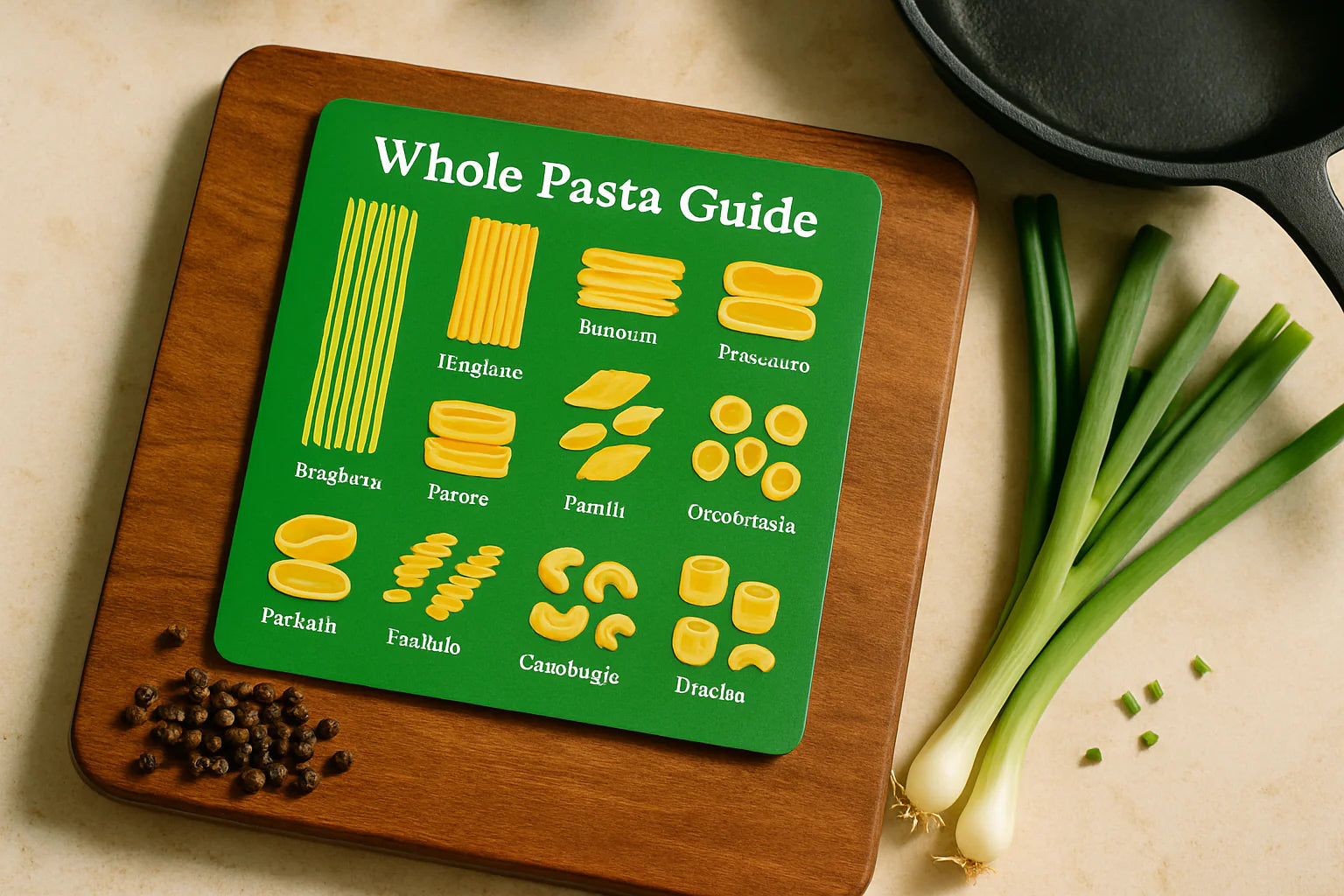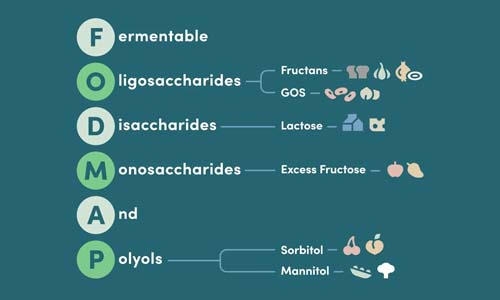Low FODMAP Pasta Guide: Essential Tips for Perfect Meals

If you're managing IBS or digestive sensitivities, pasta night doesn't have to be off the table. With two-thirds of Americans experiencing digestive issues and nearly 1 billion people worldwide living with IBS, finding gut-friendly alternatives to traditional wheat pasta has become essential for many home cooks. For a comprehensive overview of pasta options for sensitive digestion, see this Low FODMAP pasta guide.
Key Takeaways
- Low FODMAP pasta options include rice, quinoa, corn, and buckwheat varieties that are gentler on digestion than wheat-based pasta.
- Portion control is important even when consuming low FODMAP pastas to avoid digestive discomfort.
- Pasta can still be enjoyed by those managing IBS or digestive sensitivities with the right low FODMAP alternatives.
- A significant number of people globally experience digestive issues, making gut-friendly pasta options increasingly relevant.
Table of Contents
- Understanding the Low FODMAP Diet
- Low FODMAP Pasta Options
- How to Choose Low FODMAP Pasta: Essential Buying Tips
- Recommended Low FODMAP Pasta Brands
- FODMAP-Friendly Pasta Sauces and Toppings
- Cooking Tips for Perfect Low FODMAP Pasta
- Advanced Low FODMAP Pasta Techniques
- Troubleshooting Common Low FODMAP Pasta Issues
- Making Low FODMAP Pasta a Sustainable Choice
The key to enjoying low FODMAP pasta lies in understanding which varieties work best for your digestive system and how to prepare them without triggering symptoms. We'll guide you through everything from choosing the right pasta types to creating flavorful sauces that won't leave you uncomfortable.
Understanding the Low FODMAP Diet
The low FODMAP diet targets specific carbohydrates that can trigger digestive symptoms in sensitive individuals. FODMAP stands for Fermentable Oligosaccharides, Disaccharides, Monosaccharides, and Polyols—compounds that can ferment in the gut and cause bloating, gas, and other uncomfortable symptoms. For a deeper dive into how FODMAPs affect pasta choices, visit this expert resource on low FODMAP pasta.
Important distinction: Wheat pasta contains fructans (a type of FODMAP), not gluten, that typically causes digestive issues. This means gluten-free doesn't automatically equal low FODMAP.
Wheat Pasta and FODMAPs
Traditional wheat pasta is high in fructans, which can trigger symptoms in people with IBS or FODMAP sensitivities. While some individuals may tolerate up to 2/3 cup of cooked wheat pasta, a standard adult portion is typically 1 cup—putting most servings into high FODMAP territory.
This is where low FODMAP pasta alternatives become game-changers for maintaining both digestive comfort and culinary satisfaction.
Low FODMAP Pasta Options

The good news? You have plenty of delicious alternatives that won't compromise on texture or flavor. Here are the most reliable low FODMAP pasta choices:
- Brown Rice Pasta
- Serving size: 1 cup cooked. Offers a slightly nutty flavor and holds sauce well.
- Quinoa Pasta
- Serving size: 1 cup cooked. Higher in protein than most alternatives, with a mild taste.
- Corn Pasta
- Serving size: 1 cup cooked. Naturally sweet flavor that pairs beautifully with tomato-based sauces.
- Buckwheat Pasta
- Serving size: approximately 62.5g cooked. Despite its name, buckwheat is gluten-free and offers an earthy flavor.
Portion awareness: Even with low FODMAP pasta varieties, portion control matters. Chickpea and lentil pastas, while nutritious, should be consumed in moderation—typically less than 1 cup—as they can become high FODMAP in larger quantities.
Creative Pasta Substitutes
Beyond traditional grain-based pastas, these alternatives offer variety and nutrition:
- Zucchini noodles: Limit to 65g (about 1/3 cup) to keep FODMAPs low
- Spaghetti squash: Naturally low FODMAP and grain-free
- Polenta: Versatile cornmeal that works beautifully in pasta-style dishes
How to Choose Low FODMAP Pasta: Essential Buying Tips
Shopping for low FODMAP pasta requires more attention than grabbing any gluten-free option off the shelf. Here's what to look for:
Label reading is crucial: Some gluten-free pastas contain inulin, soy flour, or other high FODMAP ingredients that can trigger symptoms.
Always check ingredient labels for single-source grains like rice, corn, or quinoa. Avoid assumptions—not all gluten-free products are automatically low FODMAP.
Look for certified low FODMAP products when possible. Some brands carry certification or have been tested by reputable institutions like Monash University, giving you extra confidence in your choices.
Recommended Low FODMAP Pasta Brands

Finding reliable brands takes the guesswork out of low FODMAP pasta shopping. Here are our top picks based on ingredient quality, taste, and digestive comfort:
Key insight: Not all gluten-free pasta brands are created equal. Some contain high FODMAP ingredients like inulin or soy flour that can trigger symptoms.
Jovial Foods - Consistent Quality
Their brown rice pasta comes in multiple shapes and maintains excellent texture when cooked properly. Made with simple, clean ingredients and widely available in health food stores.
- Single-ingredient brown rice pasta
- Multiple shapes available
- Holds sauce well without becoming mushy
Bionaturae - Versatile Blends
Offers thoughtful blends of brown rice, white rice, and lentil flours. Always check labels for each shape, as formulations can vary between products.
Shopping tip: Even within trusted brands, different pasta shapes may have different ingredients. Always verify the label matches your dietary needs.
Barilla Gluten-Free - Widely Available
Found in most grocery stores, making it convenient for regular shopping. Watch for additives like mono- and diglycerides in some varieties.
Banza Chickpea Pasta - High Protein Option
Can be low FODMAP in servings under 1 cup. Offers significantly more protein than grain-based alternatives, making it filling and nutritious.
- Higher protein content than traditional pasta
- Portion-controlled low FODMAP option
- Good texture when not overcooked
FODMAP-Friendly Pasta Sauces and Toppings
The right sauce can make or break your low FODMAP pasta experience. Traditional marinara and Alfredo sauces often contain garlic and onion, but you have plenty of flavorful alternatives. For more inspiration, browse this roundup of gut-friendly pasta recipes that are suitable for a low FODMAP diet.
For low FODMAP pasta sauces, focus on garlic-infused oils, fresh herbs, and tomato-based options without added garlic or onion solids.
Common Low FODMAP Sauce Ingredients
- Tomato paste
- Use in controlled portions—it's naturally low FODMAP but concentrated
- Garlic-infused oil
- Provides garlic flavor without FODMAP-containing solids
- Fresh herbs
- Basil, parsley, thyme, and oregano add vibrant flavor
- Hard cheeses
- Parmesan and aged cheddar are typically low in lactose
We use the green parts of scallions and chives instead of onions in our cooking—they offer bright, savory flavor without triggering digestive discomfort.
Store-Bought Low FODMAP Sauce Options
When you need convenience without compromising your digestive comfort, these brands offer reliable options:
| Brand | Varieties | Key Features |
|---|---|---|
| Fody Foods | Arrabiata, Bolognese | Certified low FODMAP, vegan options |
| Rao's Homemade | Sensitive Recipe Marinara | Premium ingredients, no garlic/onion |
| Prego | Sensitive Recipe | Widely available, budget-friendly |
Always verify ingredients: Even "sensitive" formulations can change, so check labels for onion, garlic, and other high FODMAP additives before purchasing.
Cooking Tips for Perfect Low FODMAP Pasta

Alternative grain pastas behave differently than wheat pasta, but with the right techniques, you'll achieve restaurant-quality results every time.
Quick cooking rule: Most rice and corn pastas cook 1-2 minutes faster than wheat pasta. Start checking for doneness earlier than package directions suggest.
Achieving Optimal Texture
Rice and quinoa pastas can become mushy if overcooked. Here's how to nail the perfect texture:
- Use plenty of salted water—at least 4 quarts per pound of pasta
- Bring water to a full rolling boil before adding pasta
- Stir immediately and frequently during the first 2 minutes
- Test for doneness 1-2 minutes before package timing
- Reserve pasta water before draining—it helps bind sauces
Flavor Enhancement Techniques
Alternative grain pastas have more subtle flavors than wheat, making them perfect canvases for bold, gut-friendly seasonings:
- Toast rice or quinoa pasta in a dry pan for 2-3 minutes before boiling for nuttier flavor
- Add lemon zest and fresh herbs directly to hot, drained pasta
- Use high-quality bone broth instead of water for extra richness
- Finish with a drizzle of good olive oil and fresh cracked pepper
Gourmend advantage: Our organic bone broths are made with chives and scallion greens instead of onions, providing deep umami flavor that's gentle on digestion—perfect for cooking pasta or creating rich sauces.
For more low FODMAP cooking inspiration and tested recipes, explore our complete recipe collection where every dish is designed to deliver maximum flavor with minimum digestive stress.
Advanced Low FODMAP Pasta Techniques
Mastering low FODMAP pasta goes beyond basic cooking—it's about creating restaurant-quality dishes that satisfy your cravings while supporting digestive comfort. These advanced techniques will elevate your pasta game.
Pro insight: The key to exceptional low FODMAP pasta lies in building layers of flavor through technique, not just ingredients.
Maximizing Pasta Water for Silky Sauces
That starchy pasta water is liquid gold for creating cohesive, restaurant-style sauces. Rice and quinoa pastas release different starches than wheat, requiring adjusted techniques:
- Reserve at least 1 cup of pasta water before draining
- Add pasta water gradually—start with 2-3 tablespoons
- Toss pasta and sauce together over medium heat for 1-2 minutes
- The starch helps bind oil-based sauces without dairy
Timing tip: Alternative grain pastas continue cooking from residual heat longer than wheat pasta. Undercook by 30 seconds, then finish in the sauce.
Building Complex Flavors Without FODMAPs
Creating depth without garlic and onion requires strategic layering of gut-friendly ingredients:
- Aromatics base
- Start with garlic-infused oil, scallion greens, and fresh herbs
- Umami builders
- Add tomato paste, aged cheeses, or mushroom powder for savory depth
- Acid balance
- Finish with lemon juice or vinegar to brighten flavors
- Textural contrast
- Include toasted nuts, crispy herbs, or breadcrumbs for interest
Our organic bone broths provide natural umami from oyster mushrooms and nori seaweed—perfect for deglazing pans or creating rich, gut-friendly pasta sauces without artificial flavor enhancers.
Optimizing Portions for Maximum Satisfaction
Smart portioning ensures you stay within low FODMAP limits while feeling completely satisfied:
| Strategy | Technique | Benefit |
|---|---|---|
| Volume addition | Add zucchini noodles (65g max) to pasta | Increases serving size without FODMAPs |
| Protein pairing | Include chicken, fish, or eggs | Enhances satiety and nutritional value |
| Healthy fats | Drizzle quality olive oil or add nuts | Slows digestion, increases satisfaction |
Troubleshooting Common Low FODMAP Pasta Issues
Even experienced cooks encounter challenges when transitioning to alternative grain pastas. Here's how to solve the most common problems:
The most frequent issue with low FODMAP pasta is overcooking, which leads to mushy texture and poor sauce adhesion.
Solving Texture Problems
Mushy or gritty pasta can ruin an otherwise perfect meal. Here's how to achieve consistent results:
- Gritty texture: Rinse rice pasta briefly after draining to remove excess starch
- Mushy pasta: Reduce cooking time by 1-2 minutes and finish in sauce
- Clumping: Stir frequently during first 3 minutes of cooking
- Sauce separation: Add pasta water gradually while tossing over heat
Temperature matters: Serve low FODMAP pasta immediately after saucing. Alternative grain pastas lose their ideal texture faster than wheat pasta as they cool.
Boosting Flavor Without Triggers
Missing the deep, savory notes that garlic and onion provide? These techniques deliver complex flavors while keeping your gut happy:
- Toast spices like fennel seeds or cumin before adding to oil
- Use citrus zest for brightness—lemon, lime, or orange
- Incorporate fresh herbs at different stages for layered flavor
- Add a splash of white wine or broth for depth
Making Low FODMAP Pasta a Sustainable Choice
The key to long-term success with low FODMAP pasta isn't perfection—it's creating a system that works with your lifestyle, budget, and taste preferences.
Sustainability strategy: Focus on 3-4 reliable pasta types and master them rather than constantly experimenting with new varieties.
Smart Meal Prep Strategies
Batch cooking low FODMAP pasta saves time and ensures you always have gut-friendly options ready:
- Cook and store separately
- Keep cooked pasta and sauce separate to prevent mushiness
- Portion control prep
- Pre-measure 1-cup portions to stay within FODMAP limits
- Sauce variety
- Prepare 2-3 different sauces weekly for meal variety
- Freeze-friendly options
- Rice and quinoa pastas freeze well for up to 3 months
Quality investment: Premium low FODMAP pastas and ingredients may cost more upfront, but they deliver better texture, flavor, and digestive comfort—making them worth the investment for regular use.
Low FODMAP pasta opens up a world of culinary possibilities without compromising your digestive health. By choosing quality ingredients, mastering proper cooking techniques, and understanding portion guidelines, you can enjoy satisfying pasta meals that support your overall well-being.
Remember, the low FODMAP diet is a tool for managing symptoms, not a permanent restriction. Work with healthcare professionals to personalize your approach, and don't hesitate to experiment with new recipes and techniques. Your gut—and your taste buds—will thank you.
Ready to explore more gut-friendly recipes? Visit our complete low FODMAP recipe collection for tested dishes that prove eating for digestive health never means sacrificing flavor.
Check out our Low Fodmap Bundles
Frequently Asked Questions
What kinds of pasta are low FODMAP?
Low FODMAP pastas are typically made from ingredients that don’t contain the fermentable carbs that trigger IBS symptoms. Examples include rice pasta, corn pasta, quinoa pasta, and certain gluten-free blends made without high FODMAP ingredients like wheat or chickpeas. These options provide a familiar texture and taste while being gentle on digestion.
What pasta is good for IBS sufferers?
For IBS sufferers, pasta made from rice, corn, or quinoa is usually a safe bet because they’re naturally low in FODMAPs. Portion size matters too, as eating large amounts can cause discomfort regardless of the type. Choosing organic, clean-label pastas without additives or high FODMAP fillers helps maintain digestive comfort while keeping meals flavorful and satisfying.
Is gluten-free Barilla pasta low FODMAP?
Gluten-free Barilla pasta is made primarily from corn and rice, which are low FODMAP ingredients in appropriate servings. This means it generally fits well within a low FODMAP diet. That said, it’s important to stick to recommended serving sizes to avoid triggering symptoms, as too large portions of any pasta could cause digestive upset.
What is a low FODMAP pasta serving size?
A typical low FODMAP serving size for cooked pasta is about 1 cup or 140 grams. Sticking to this portion helps keep FODMAP intake low enough to avoid symptoms. Going over this amount can increase fermentable carbs and lead to bloating or discomfort, so measuring servings is a simple way to enjoy pasta while supporting gut health.
What pasta has the lowest GI?
Pasta made from whole grains like quinoa or brown rice tends to have a lower glycemic index (GI) compared to refined pasta, meaning it raises blood sugar more slowly. Lower GI foods can be gentler on digestion and energy levels. Among low FODMAP options, quinoa pasta often strikes a good balance between flavor, nutrition, and a moderate GI.
Is Sweet Potato pasta low FODMAP?
Sweet potato pasta is generally not considered low FODMAP because sweet potatoes contain moderate to high amounts of fermentable carbs depending on serving size. While small amounts might be tolerated, larger portions could trigger IBS symptoms. For those managing gut sensitivities, it's safer to opt for more established low FODMAP pasta alternatives like rice or quinoa.





